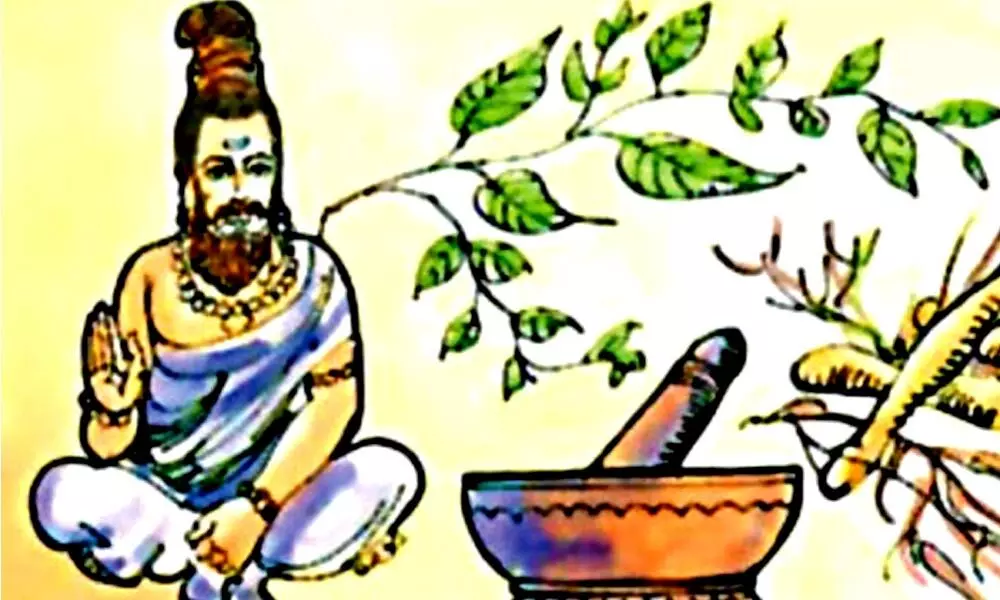IIT researchers on verge of proving scientific basis!
The debate whether Ayurveda is science continues, but
image for illustrative purpose

Long term oral intake of Amalaki Rasayana reduces the thickening of heart muscle and improves heart function
The hallmark of Ayurvedic system is the long-standing unverified claim that it is a holistic approach. It treats the body as a whole. Multiple components in an ayurvedic medicine are believed to act synergistically to improve a diseased condition. Our analysis using the tools and techniques of modern medicine suggest that this is, indeed, true
Kolkata: EVEN as the debate over if Ayurveda is science or not continues and Ayurveda often being considered as 'not scientific', researchers at IIT Guwahati now claim to have developed modern drug development methods to understand the therapeutic action of ayurvedic formulations. The current study once recognised and proved credible, promises to bring in revolutionary changes in the treatment and care of high blood pressure.
Prof Vibin Ramakrishnan, Department of Biosciences and Bioengineering, IIT Guwahati and Prof CC Kartha of Academy of Cardiovascular Sciences have used modern drug development methods to analyse the mode of action of an Ayurvedic rejuvenating medicine - Amalaki Rasayana. In their study, the results of which have been recently published in a prestigious Nature partnership journal Systems Biology and Applications, they have shown how Amalaki Rasayana reduces high blood pressure-induced structural and functional changes in the heart.
Interestingly, Prof Ramakrishnan and Prof Kartha had earlier found that long term oral intake of Amalaki Rasayana reduces the thickening of heart muscle and improves heart function. The latest study that used the emerging scientific approaches of Network Pharmacology and Chemoinformatics shows how the formulation is likely to work in the human body.
"The hallmark of Ayurvedic system is the long-standing unverified claim that it is a holistic approach. It treats the body as a whole. Multiple components in an ayurvedic medicine are believed to act synergistically to improve a diseased condition. Our analysis using the tools and techniques of modern medicine suggest that this is, indeed, true", said Prof Ramakrishnan.
He said that network pharmacology analyses the influence of drugs on diseases as a whole rather than the one-gene-one-target-one-drug approach that has been conventionally followed in drug discovery. Network Pharmacology is effective for developing multi-component therapeutics, which is typical of traditional systems like Ayurvedic and Chinese medicines – the drugs prescribed in these systems act on multiple targets and pathways. Chemoinformatics helps in comparing drug molecules using standardised computational tools.
The scientists employed in vivo studies in small animals, gene-expression and proteomics analysis, informatics tools and the techniques of Systems Medicine, all of which are used in the development of allopathic drugs. They also examined the possible synergy among the actions of different components of the Rasayana using the Network Pharmacology approach.
"This interdisciplinary approach provides opportunities for systematic investigations for unravelling the mechanism of action of multicomponent Ayurvedic medicines from the perspective of a network of normal functional pathways as well as pathways that are altered in chronic diseases", said Prof Kartha, of Academy of Cardiovascular Sciences.
It is pertinent to mention here that while Ayurvedic medicines and therapeutics have been handed down over generations and shown anecdotally to be efficacious, they have not yet been subjected to a great extent to the modern methods of drug development. For practitioners of modern medicine, 'scientific evidence' means verification of the efficacy and safety of a potential drug, using the tools and procedures employed in modern medical biology. The work by Prof Ramakrishnan and Prof Kartha seeks to integrate Ayurveda with the principles and practices of modern medicine to contemporise the former's 'holistic approach' with the latter's 'magic bullet' style.

